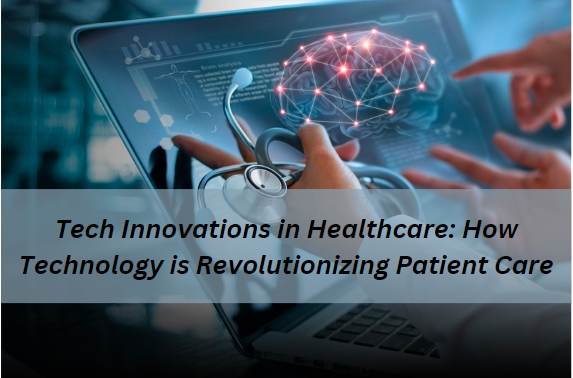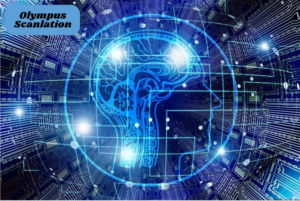Tech Innovations in Healthcare: How Technology is Revolutionizing Patient Care
The healthcare industry is undergoing a remarkable transformation, driven by cutting-edge technological advancements. These innovations are revolutionizing patient care, improving outcomes, and making healthcare more accessible and efficient. This article explores some of the most significant tech innovations in healthcare and how they are reshaping the landscape of patient care.
Contents [hide]
1. Telemedicine
a. Virtual Consultations
Telemedicine allows patients to consult with healthcare providers remotely through video conferencing. This innovation has expanded access to medical care, especially for those in remote or underserved areas. Patients can receive timely diagnoses and treatment plans without the need for physical visits.
b. Remote Monitoring
Telemedicine also includes remote monitoring technologies, such as wearable devices that track vital signs and transmit data to healthcare providers. This continuous monitoring helps manage chronic conditions and provides real-time insights into a patient’s health status.
c. Benefits
- Convenience: Patients can access healthcare services from the comfort of their homes.
- Cost-Effectiveness: Reduces travel expenses and the need for physical infrastructure.
- Accessibility: Improves access to healthcare for people in rural or remote locations.
2. Artificial Intelligence (AI) and Machine Learning
a. Predictive Analytics
AI and machine learning algorithms analyze vast amounts of data to predict patient outcomes and identify potential health risks. Predictive analytics can anticipate disease outbreaks, optimize treatment plans, and personalize patient care.
b. Diagnostic Tools
AI-powered diagnostic tools can analyze medical images, such as X-rays, MRIs, and CT scans, with remarkable accuracy. These tools assist radiologists in detecting anomalies and diagnosing conditions at an early stage.
c. Personalized Medicine
AI enables the development of personalized treatment plans based on a patient’s genetic makeup, lifestyle, and medical history. This tailored approach enhances treatment efficacy and reduces adverse effects.
d. Benefits
- Accuracy: Enhances diagnostic accuracy and early detection of diseases.
- Efficiency: Speeds up the diagnostic process and reduces the workload of healthcare providers.
- Personalization: Facilitates customized treatment plans for individual patients.
3. Wearable Health Devices
a. Fitness Trackers
Wearable devices, such as fitness trackers and smartwatches, monitor physical activity, heart rate, sleep patterns, and other health metrics. These devices empower individuals to take control of their health and make informed lifestyle choices.
b. Medical Wearables
Advanced medical wearables can track specific health conditions, such as glucose levels in diabetics, cardiac rhythms, and blood pressure. These devices provide continuous monitoring and alert users and healthcare providers to potential health issues.
c. Benefits
- Proactive Health Management: Encourages users to monitor and manage their health proactively.
- Early Detection: Identifies health issues early, allowing for timely intervention.
- Data-Driven Insights: Provides valuable health data that can inform treatment decisions.
4. Robotics in Surgery
a. Minimally Invasive Procedures
Robotic-assisted surgery allows for minimally invasive procedures with greater precision and control. Surgeons can perform complex operations through small incisions, reducing recovery time and minimizing complications.
b. Enhanced Precision
Robotic systems provide enhanced precision and dexterity, allowing surgeons to perform delicate procedures that would be challenging with traditional methods. This technology is particularly beneficial in neurosurgery, orthopedics, and cardiac surgery.
c. Benefits
- Reduced Recovery Time: Minimally invasive procedures lead to faster recovery and shorter hospital stays.
- Improved Outcomes: Enhances surgical precision and reduces the risk of complications.
- Patient Comfort: Minimizes pain and scarring associated with traditional surgery.
5. Electronic Health Records (EHRs)
a. Centralized Data Management
EHRs consolidate patient information into a centralized digital system, making it easily accessible to authorized healthcare providers. This system improves the accuracy and efficiency of patient data management.
b. Interoperability
Interoperable EHR systems allow seamless sharing of patient information across different healthcare facilities and providers. This ensures continuity of care and reduces the risk of errors.
c. Benefits
- Efficiency: Streamlines administrative processes and reduces paperwork.
- Coordination: Enhances coordination among healthcare providers for better patient care.
- Accessibility: Provides quick access to comprehensive patient records, improving decision-making.
6. 3D Printing in Healthcare
a. Custom Prosthetics and Implants
3D printing technology is revolutionizing the production of custom prosthetics and implants. These tailor-made solutions provide a better fit and improved functionality for patients.
b. Surgical Models
Surgeons use 3D-printed models of patients’ anatomy to plan and practice complex procedures. These models enhance surgical precision and reduce the risk of complications.
c. Tissue Engineering
Researchers are exploring 3D printing for tissue engineering, with the goal of creating functional human tissues and organs. This innovation holds promise for addressing organ shortages and improving transplant outcomes.
d. Benefits
- Customization: Provides personalized medical solutions tailored to individual patients.
- Precision: Enhances surgical planning and execution.
- Innovation: Advances research in regenerative medicine and tissue engineering.
7. Blockchain Technology
a. Secure Data Management
Blockchain technology offers a secure and transparent method for managing healthcare data. It ensures data integrity, reduces the risk of breaches, and enhances patient privacy.
b. Interoperability and Transparency
Blockchain enables secure sharing of patient data across different healthcare systems, improving interoperability and transparency. This facilitates efficient and accurate data exchange.
c. Benefits
- Security: Protects patient data from unauthorized access and cyber threats.
- Transparency: Ensures transparent and tamper-proof data management.
- Efficiency: Streamlines data sharing and reduces administrative burdens.
8. Virtual Reality (VR) and Augmented Reality (AR)
a. Medical Training
VR and AR technologies are transforming medical education and training. These immersive tools provide realistic simulations for surgical training, anatomy studies, and patient interaction.
b. Pain Management
VR is used as a therapeutic tool for pain management and rehabilitation. Patients can engage in virtual environments that distract them from pain and aid in recovery.
c. Patient Education
AR applications help patients understand their medical conditions and treatment plans by providing interactive visualizations. This enhances patient engagement and compliance.
d. Benefits
- Enhanced Training: Provides realistic and safe training environments for medical professionals.
- Patient Engagement: Improves patient understanding and involvement in their care.
- Therapeutic Applications: Offers innovative approaches to pain management and rehabilitation.
Conclusion
Technological innovations are revolutionizing healthcare, making it more efficient, accessible, and patient-centric. From telemedicine and AI to wearable devices and 3D printing, these advancements are transforming the way healthcare is delivered and experienced. As technology continues to evolve, it holds the promise of further enhancing patient care, improving outcomes, and driving the future of healthcare.






















































Post Comment